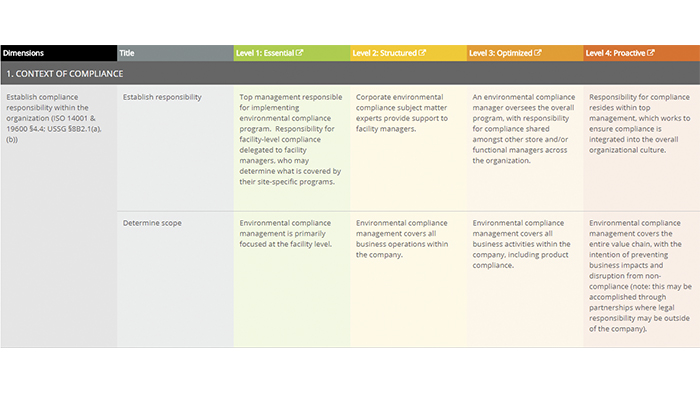Retail Compliance Leadership Model 1: Context of Compliance
- By [ Tiffin Shewmake ]
- 01/18/2018
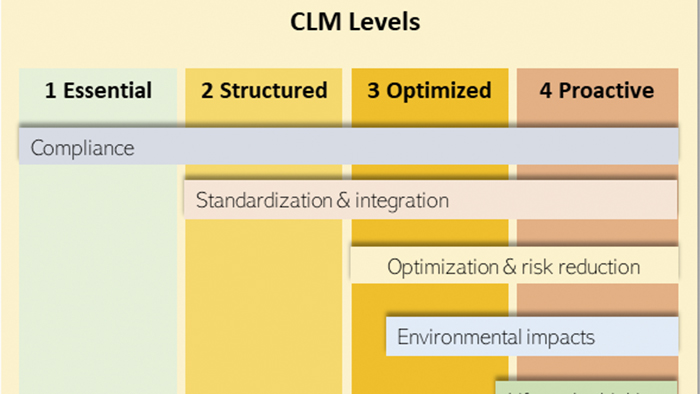
The Compliance Leadership Model (CLM) framework helps retailers optimize their environmental management programs. The six CLM dimensions define a comprehensive environmental compliance program. For each dimension, there are 4 levels with the first “Essential” level including the elements of a basic compliance program. Across the levels, programs are increasingly more integrated, include more analysis for optimization and risk reduction, and a greater focus on environmental impacts and sustainability. The optimum level for a retailer depends on the company’s operations, regulatory obligations and risk, and corporate culture. The CLM is described in more detail in a previous article.
Over the next few months, I am going to discuss the CLM dimensions and the difference in the levels for each dimension.This dimension includes some of the basic elements needed for any successful compliance program such as an understanding of the legal requirements that apply to the company, an understanding of key stakeholders, identifying who in the organization is responsible for compliance and defining the scope of the compliance program.
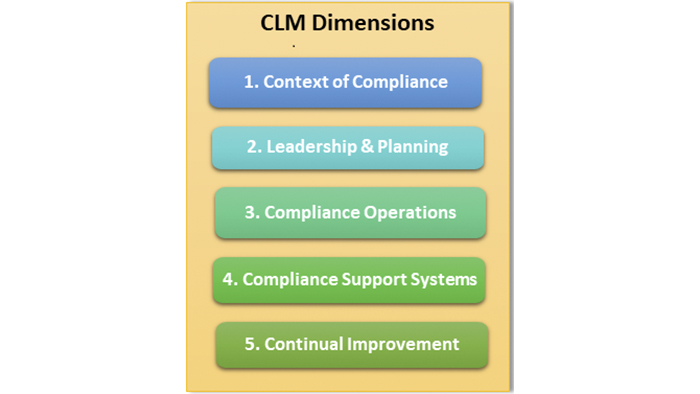
Sub-Dimension 1 | Understand Environmental Impacts and Compliance Requirements
Obviously, a first step to compliance is to understand the legal requirements. However, given the variations in environmental regulations by jurisdiction, complexity around what requirements apply in what situations, and ongoing changes to the rules, understanding, much less tracking, requirements can be challenging. This dimension is about how and what companies track and includes 3 elements:
• Understand compliance obligations.
• Track changes to compliance obligations.
• Understand environmental impacts.
Essential programs generally only consider legal requirements and implement ad hoc programs for tracking and understanding requirements. As programs move across the matrix, they implement more comprehensive programs across the organization to track obligations and broaden their programs to include environmental impacts as well as voluntary obligations such as zero waste or greenhouse gas emission goals. Organizations at the proactive level try to predict requirements and reduce future obligations and environmental impacts.
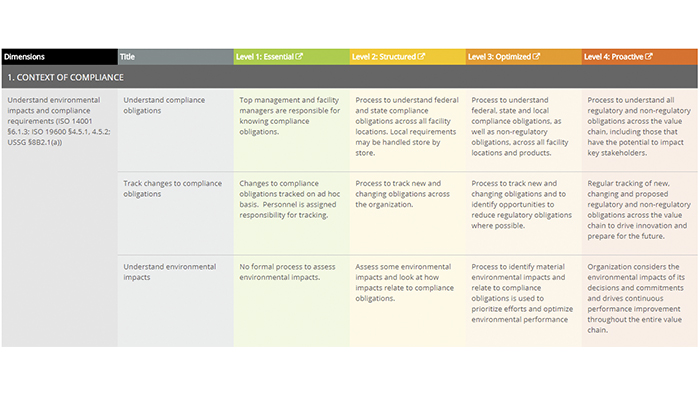
Sub-Dimension 2 |Understand Needs and Expectations of Key Stakeholders
Understanding and engaging stakeholders helps organizations identify opportunities and risks across their value chain. Good communication with regulators can reduce risks by resolving or avoiding potential issues before they become significant. At the Essential Level, stakeholder engagement tends to be ad hoc and in response to specific issues while organizations at the Proactive level seek out and collaborate with key stakeholders.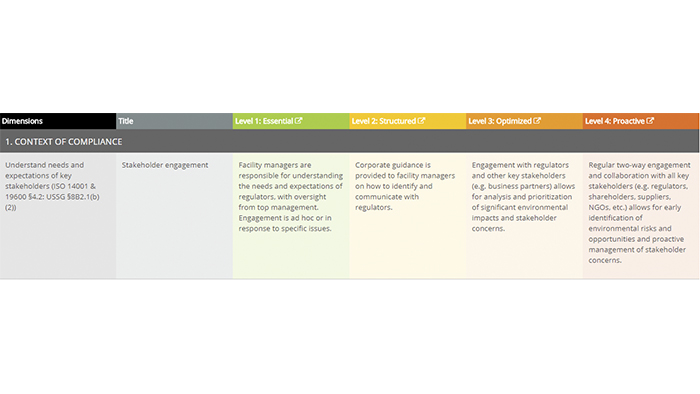
Sub-Dimension 3 |Establish Compliance Responsibility Within the Organization
For all program levels, top management is responsible for compliance programs. For Essential Programs, responsibility is generally delegated to facility-level managers. Moving to the right in the matrix, programs increasingly have dedicated subject matter experts and managers with oversight across the organization.The other part of this dimension is for organizations to determine the scope of their compliance program. At the Essential Level, the scope is typically focused at the facility level while Proactive programs expand the scope with the goal of preventing disruption from compliance issues along the value chain.
